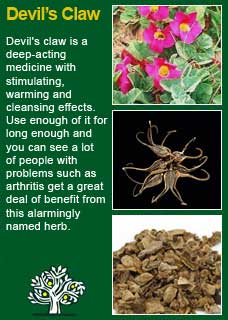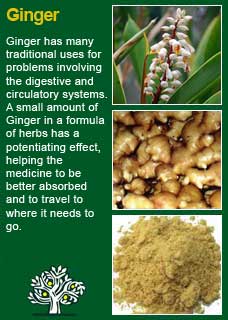
|
|
||||
| Our Pages ABOUT CONSTITUTIONAL MEDICINE
|
Prickly Ash is an intriguingly aromatic tree that grows to around 10 meters and, as its name suggests, is covered with very strong prickles! The berries are used in some herbal medicine cultures but most herbalists (including me) just use the bark of Prickly Ash. It is a most interesting herb to work with; the bark quills with yellow curls on its inner sides as if hinting at the potency of the medicine within...
Prickly Ash has a rich history of use as a herb for aches and pains, particularly those that are bought about by aging, cold and poor circulation. Prickly Ash has especially been used for rheumatism and arthritis and it is for these kinds of chronic ‘cold’ conditions that it is still mostly used today. The Native Americans also used Prickly Ash internally for aching joints and would also chew some of the inner bark to cure toothache which is obviously how it got one of its common names (see below for toothache remedy). The Chippewa tribe made a strong tea of Prickly Ash which they used to bathe the legs and feet of sickly children or the elderly in order to give them additional strength to walk and move about more freely. In his book American Herbal Medicine, Charles Millspaugh writes about Prickly Ash tincture being used by physicians in the 19th century for patients suffering from peritonitis, distension of the bowels, severe abdominal inflammation and swelling, intense fevers like cholera, typhus and typhoid, and pneumonia. One tsp of the tincture was given in nearly a cup of water (sweetened with honey) each hour and about 12 times this amount was given by enema. 'The action was prompt and permanent' Millspaugh wrote, 'Prickly Ash acted like electricity, so sudden and diffusive was its influence over the entire system. I consider the tincture of Prickly Ash to be superior to any form of medication I know of'. H Felter writes 'Prickly Ash impresses the secretions and the nervous and circulatory systems. The bark, when chewed, imparts a sweetish aromatic taste, followed by bitterness and persistent acridity; the berries act similarly. The drug has remarkable sialagogue properties, inducing a copious flow of saliva and mucus. The urine is decidedly increased by it. Swallowed, it warms the stomach and augments the secretion of the gastric and intestinal juices, and probably increases hepatic and pancreatic activity. The action of the heart is strengthened by Xanthoxylum, the pulse slightly quickened, and the glands of the skin are stimulated to greater activity' F Ellingwood writes 'Prickly Ash is a stimulant to the nerve centers, and through these centers it increases the tonicity and functional activity of the different organs. It is diffusible, producing a warm glow throughout the system and nervous tingling, as if a mild current of electricity was being administered. It has a direct tonic effect upon the heart, and it mildly stimulates the capillary circulation throughout the entire body, overcoming blood stasis and congestion. It is a remedy for catarrhal gastritis. In general atonic conditions of the digestive apparatus, combined with Hydrastis canadensis (Golden Seal), it has no superior. It has a powerfully tonic influence upon the stomach and digestion, and improves the general nutritive functions of the system' The British Herbal Pharmacopoeia (BHP) describes the actions of Prickly Ash as 'circulatory stimulant, diaphoretic, antirheumatic, carminative, sialogogue'. It says it is indicated for 'cramps, intermittent claudication, Raynaud's syndrome, chronic rheumatic conditions' and specifically indicated for 'peripheral circulatory insufficiency, associated with rheumatic symptoms'. The BHP recommends a dose of 1-3 grams or by decoction and a dose of 1-3 mls of the liquid extract. Thomas Bartram writes that the actions of Prickly Ash include 'alterative, bitter, antispasmodic, carminative, tonic, diaphoretic, positive diffusive stimulant to arterial and capillary circulation'. He suggests uses for it including 'cramp, cramp-like pain in leg on walking, muscular rheumatism, arthritic tendency, Raynaud's disease, temporal arteritis, toothache (chewed), improves circulation of blood through the brain'. Bartram recommends a tea from a quarter to a half a tsp (1/2 a tsp is about 1 gram) to each cup of water, simmered for 20 minutes, dose half to one cup, or 1-2 mls of the liquid extract.
~ Prickly Ash has shown analgesic i.e. pain relieving properties (Foster S. 101 Medicinal Herbs. Loveland, CO: Interweave Press, 1998, 160-1) and diaphoretic (sweat inducing) properties as well as promoting saliva. Likewise it has been shown to exhibit antifungal (Bafi-Yeboa NF, Arnason JT, Baker J, et al. Antifungal constituents of northern prickly ash, Phytomedicine . 2005;12:370–7) and antimicrobial actions (Gibbons S, Leimkugel J, Oluwatuyi M, et al. Activity of Zanthoxylum clava-herculis extracts against multi-drug resistant methicillin-resistant Staphylococcus aureus (mdr-MRSA). Phytother Res . 2003;17:274–5) ~ Prickly Ash extracted into water was shown to significantly reduce swelling and improve blood flow in experimental models of varicose veins and hemorrhoids (Bensky D, Gamble A, Kaptchuk T. Chinese Herbal Medicine Materia Medica, rev ed. Seattle: Eastland Press, 1993, 304-5)
For some years now, against this proven and safe way of herbalism, there has been a rising tide of excessive caution and scare-mongering in many parts of the world. The same authorities that, not so long ago, decried herbal medicines as ineffectual, have now taken up a different adversarial position; that they are dangerous substances that should only be prescribed by Doctors, who of course have zero training in them. Unfortunately, the same unnecessary fear and worry has crept into many natural health websites and popular publications on herbs. Herbs that we have safely used for thousands of years, that have no reports of adverse reactions in the medical literature despite widespread use by millions of people, are suddenly described as contraindicated because of something that should have been seen as completely unimportant, or at the utmost a merely theoretical concern, such as a laboratory study on one of the herb's constituents to use an all too common example. I wonder sometimes if the writers of such articles feel that the herb will be more deserving of respect if it is thought to be a little bit dangerous, in other words more like a drug than something that has simply come out of the earth and been used by ordinary people for generations beyond count. There is just so much misinformation about herbal medicine on the internet now. Ludicrous claims and cautions abound in equal measure; it seems like one group are trying to make money out of the public whilst the other are busily trying to scare them off. I have to believe that the kind of reader who takes the time to read pages on herbs that are as extensive as this one is much less likely to be swayed by marketers or misinformers. I hope that you will keep your wits about you if you get conflicting opinions from people who have never really got to know these herbs, who have never worked with them, or learned how to use them safely and effectively. I want to remind you that the reason that herbs can never be patented and owned by any individual or corporation is because they are, and always will be, the People's medicine. They belong to all of us and it is my great hope in sharing this work that you will learn how to use them wisely for yourself, and the people you care for. Be safe, but do not be afraid.
Prickly Ash really needs to be experienced first-hand to appreciate its remarkable warming and stimulating properties. If you who are reading this are studying herbal medicine or have your own reasons to want to know this old plant ally much more deeply then I recommend to do whatever it takes to obtain a sample of the bark and then chew on it for a minute or so. Such 'experiential learning' will give you an appreciation of this herb that no amount of writing about it could achieve. The taste is certainly not the easiest to get used to, it has an acrid quality that is hardly what you could call appealing, however this is really quite short lived because the longer you allow it to penetrate the more numbing is its effects. What you can feel in your mouth is exactly what you can feel in your body if you give it enough of a chance to get in deep and help with pain that is stuck deep in your joints. As much as I would like to give my patients a piece of root of Prickly Ash to chew so they could better appreciate its qualities I am afraid many of them might not want to repeat the experiment when it came time to take it as an internal medicine! Of course, taking the tincture of Prickly Ash is very much easier than chewing on its root. The thing to appreciate with Prickly Ash is that you have to give it time to build up its warming, penetrating action. You could certainly get a faster result with it if you used it like the Native Americans (who drank massively strong decoctions for immediate pain relief) but to be honest I think this would be hard for most modern people to stomach and a more realistic approach is to use moderate amounts over a period of several weeks. I personally aim for somewhere around 2 mls a day of the tincture we make ourselves, sometimes up to double that amount. Prickly Ash combines perfectly with Devil's claw for arthritis, and with Bayberry and/or Ginger to improve circulation and help shift deep-set conditions in the joints or tissues.
1) Simply take a small amount of Prickly Ash tincture, drip it into a wad of cotton until soaked, and hold directly against the sore tooth. Pain should be relieved within minutes.
If the salivary glands have stopped working properly and the mouth is very dry simply take some Prickly Ash powder or tincture and place a small amount on to the tongue and keep it in the mouth until absorbed every few hours. A cure or at least a significant improvement should be rapidly obtained. Much of the information here about the traditional uses of Prickly Ash is consistent with the model of thinking whereby one may treat problem A with plant B. There is value in this approach, especially in how it helps us pass on useful knowledge to one another, but it falls short in one vital area; and that is that people are not all cut from the same cloth! Something that works brilliantly for one person may do less for another --why is this? Part of the reason is that people vary in their constitutions as to whether they are either hotter or cooler and, at the same time, either dryer or damper. This useful and rather fascinating subject is introduced further here Another big part of using the right herb when it is most needed comes from understanding the need to treat what is going wrong for the person that had led up to their getting a health condition. In this light, Prickly Ash can particularly offer its benefits when an activation is needed in the 'cycle of healing', more about this here
Please understand that I cannot advise you, including on products or dosage, without seeing you in person in my clinic but for ideas
on how you might find a good herbalist in your area read here |
|
|
|
© 2011 R.J.Whelan Ltd










